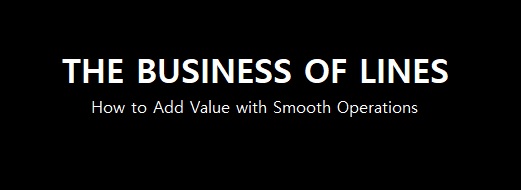Lines are inevitable at a nightclub. In fact, they’re an important part of perceived value. A line outside your venue shows your customers that the party is worth attending and therefore is worth the wait. It’s a signal of quality and a boost in reputation. But that’s only if you manage your line well. A poorly managed line will do the exact opposite.
Americans spend roughly 37 billion hours waiting in line each year. And oftentimes, that wait is torture. Boredom, stress, anxiety, and that feeling of wasting your leisure time all contribute to that torture. It’s rarely the length of the wait that people hate, but rather the way they feel while waiting.
That’s where your line management comes into play.
A long, ambiguous, unstructured line leads to this anxiety and boredom. When customers don’t know why they’re waiting or how long they’ll wait for, they’re more bound to have a negative perception of your venue and not spend as much once they get inside. Your lack of line management damages your customer’s view of your venue, causing them to leave the line, not enter it in the first place, or discourage them from coming back entirely.
A streamlined line on the other hand distracts from the negative perception, increases anticipation, and heightens your customers’ desire to have a good time and spend even more once they get through the line. Follow these tips to be on this side of line management:
1. Get a good door system
Chances are you have a mix of VIP, guestlist, and general admission guests. Use a system that can check everyone in and collect cover in one fell swoop. You’re slowing down your line and causing customer & staff confusion by using a separate system for each type of guest. Also avoid paper & pencil — one of the biggest offenders of poor door operations. Solutions like Vēmos handle every type of guest entry in one dashboard and can collect cover on the spot through cash or credit. Using one dashboard speeds up your line, mitigates confusion, and (as a bonus) collects much-needed data on every guest who walks through your door.
2. Recognize your guests
Rolling off the first point, using a system that handles every type of guest entry in one dashboard allows you to collect data on every type of customer that walks in your venue. With this information at your disposal in the pal of your hand, you get to treat every guest like an individual as they arrive. You can upsell customers to an experience you think they’ll like even more. This gesture not only makes that person feel special and more appreciated, but it abolishes any unease they felt while waiting in line. In fact, research shows the way people remember a line is heavily influenced by how the experience ends.
3. Sell in advance
We ran the door at a nightclub who had a sold-out concert with more than 1,000 people who pre-purchased tickets waiting in a line wrapped around the block before doors opened. In 20 minutes, everyone was checked in and inside the venue spending money on drinks and having a good time. When you sell in advance, you have the opportunity to mitigate the burden of standing in line. People already chose to spend their night with you and you’re already sold out. This in and of itself shows quality, desire, and reputation of your venue — you no longer need a line to do that. Having people wait in a slow line at this point will only make them disgruntled and antsy, which isn’t the way you want them to start their night with you. Sell in advance and use a good check-in system to maximize their experience.
4. Separate your lines
Putting a bit of strategy into how you treat your line can increase your revenue and speed of night, especially when it comes to pre-sale tickets. After all, what’s the benefit of a guest pre-buying a ticket if they don’t even get to skip the long line? Plus, when there is a second line for pre-purchased tickets, it entices guests to make behavioral changes to buy a ticket ahead of time, which in turn equates to more money in your pocket before the night of your event. That’s why you need to use separate lines for different functions, such as different lines for general admission, guest list, VIP tables, and pre-purchased tickets. If you want to take your strategy a step further, you can slow down the general admission line just a bit and focus on your speed in the guest list or pre-paid lines to show the value in those guests. This also works if you don’t pre-sell tickets. You can either offer pre-sale cover for a faster line experience, or you can simply use different lines for the different points of entry you do have.
Running an efficient door and having smooth line operations can result in increased dollars of gained reputation and customer spending. With these three steps, you’ll be on your way to streamlining your line and increasing your customer’s experience and spend. Contact us to find out more about how you can use these steps at your venue.
Whitney Larson is the president and director of marketing at Vēmos. Contact her at whitney.larson@vemos.io or fill out the form below.

